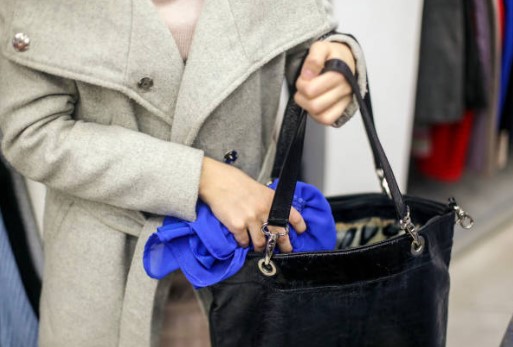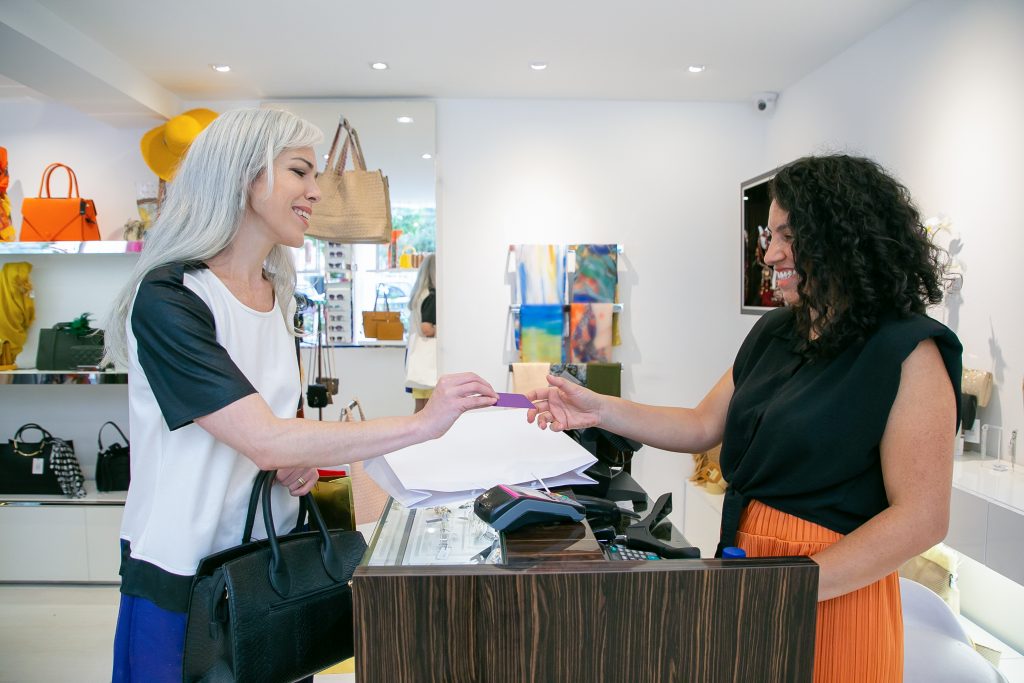Retail loss prevention is the practice of understanding the causes of shrinkage (cash or stock loss) and taking steps to mitigate them. The main causes of retail losses are shoplifting, fraudulent returns, supplier shorts and theft by employees.

Not everyone who walks through the shop doors is a customer and some result to shoplifting which impacts a business profits and hard work to survive in this challenging market.

Shoplifters will need to convert the stolen items into cash and often they will return the item back to the original store and request a refund.

This is not new News for retailers as they have been battling this for ever. This form of margin erosion to your profits can be the highest impact a retailer could face.

Its not uncommon for items to go missing in transit through van theft or shortages at the time of shipping, and this can be an invisible loss if not monitored.
Loss prevention is vital for ensuring the safety of customers and staff in retail. It safeguards against theft, fraud, and potential harm, fostering a secure environment that builds trust and enhances overall customer and employee satisfaction.
Implementing effective loss prevention measures safeguards your profit and bottom line. By minimizing theft, fraud, and financial losses, you can ensure the long-term financial stability and success of your retail business.
Preventing theft, particularly shoplifting, is a critical aspect of loss prevention. By implementing robust measures, you safeguard your merchandise, maintain profitability, and create a secure environment for both customers and staff.
Reducing employee theft is a key objective in loss prevention. By implementing stringent measures and fostering a culture of integrity, you protect your business from financial losses and create a trustworthy environment for both customers and fellow employees.
Reducing administrative errors, including incorrect pricing, vendor shorts deliveries and account issues, is essential in loss prevention. By ensuring accuracy and efficiency in these areas, you safeguard your business from financial losses and maintain customer satisfaction and trust.
Ensuring sufficient inventory to meet customer demand is crucial for improving customer satisfaction. By effectively managing stock levels, you minimize instances of unavailability, enhance shopping experiences, and foster long-term customer loyalty.
Preventing supplier error or fraud is a vital aspect of loss prevention. By implementing stringent supplier vetting processes and maintaining strong supplier relationships, you safeguard against financial losses, maintain product quality, and ensure the integrity of your supply chain.
Boosting operational efficiency is a key benefit of effective loss prevention strategies. By minimising the time and resources spent on dealing with losses, you can redirect those resources towards core business activities, enhance productivity, and improve overall operational performance.
Effective loss prevention efforts provide valuable insights and data that contribute to strategic decision-making and planning. By analysing patterns and trends in losses, you can make informed business decisions, optimise processes, and implement proactive measures to mitigate risks and drive long-term success.
Do you need to
Great retailers are always designing the store layout with the customer in mind to maximise the customer experience, and now is the time to consider how ineffectively structured stores facilitate unnoticed theft, regardless of diligent staff or surveillance systems.
To decrease retail losses caused by theft, prioritise optimal visibility by designing displays of manageable height, avoiding dense product clusters that hinder employee surveillance.
Apart from enhancing visibility, a well-organized storefront enables easier identification of missing merchandise. This not only acts as a deterrent for thieves but also improves the chances of promptly detecting any missing products, allowing you to record the loss accurately in your records. and allowing to take proactive steps to reduce future risk.
An essential loss prevention strategy entails imparting meticulous training to associates, enabling them to remain vigilant and alert on the bustling sales floor. This begins with warmly greeting every shopper upon their arrival, establishing meaningful eye contact, and fostering engaging conversations. The provision of such exceptional attention not only delights numerous customers but also acts as a deterrent for potential thieves, as they become aware of the active surveillance constantly monitoring the sales floor.
While it is crucial for retailers to invest time in training their employees on products and sales techniques, it is equally important to educate sales associates on recognising and identifying suspicious behaviour.
It is important to train your staff not to deal with a shoplifter directly as it can often turn into violent situations.
Empower your staff with the ability to identify potential red flags, including:
Safeguard your business by implementing protocols for employees who notice concerning behaviour or active shoplifting. Additionally, ensure regular training sessions covering the location of duress buttons, proper handling of security alarms, and establish safety phrases for effective communication among team members during theft incidents.
As indicated by the NRF, a significant 52% of retailers are actively planning to enhance their investment in theft prevention technology.
With the introduction of technology, it is important that you invest in a solution which is relative to cost and effective as an outcome.
New World Norm can support you with this design and specification to ensure you and your teams are safe and secure during working time.
Promoting your security measures is an effective way to demonstrate that your store prioritises premises surveillance and takes theft prevention seriously.
The presence of visible security cameras alone can often discourage both shoppers and employees from engaging in theft or price tag swapping.
If budget constraints prohibit the installation of actual cameras, you may even consider strategically placing imitation equipment that creates the illusion of a comprehensive security system.
Another deterrent for potential thieves is signage that explicitly warns of the presence of security cameras and the severe consequences of stealing from your store. However, it’s important to strike a balance as excessive signage can be off-putting to paying customers. Maintain a professional appearance and evaluate what is suitable for your specific business and clientele.
One client revealed that at their boutique, they prominently displayed signage at the entrance to inform shoppers that they were under surveillance and this had been a positive for customers to feel safe and deterred shoplifting.
Accurate inventory tracking is crucial for preventing retail loss and effectively identifying instances of theft, fraud, and human error. Implementing a robust point-of-sale (POS) system enables you to maintain a precise record of your inventory, allowing you to promptly detect any discrepancies in missing items that shouldn’t be absent.
Furthermore, a POS system aids employees in detecting fraudulent returns and verifying customer compliance with the store’s return policy. By regularly reconciling your POS system with the actual stock, you can effectively identify persistent issues related to shoplifting and take appropriate measures to address them.
In the realm of retail loss prevention, Radio Frequency Identification (RFID) tags serve as a valuable tool. These small electronic devices utilize radio waves to transmit information and play a significant role in mitigating theft and enhancing inventory accuracy.
By attaching RFID tags to your products, you can achieve real-time inventory tracking. This enables you to gain comprehensive visibility into the status of your inventory, minimizing discrepancies between your point-of-sale system and actual stock count. This heightened level of accuracy allows for earlier identification of losses and reduces the likelihood of theft going unnoticed.
Furthermore, RFID systems act as a powerful deterrent for potential thieves. The tags can trigger alarms if items are taken out of the store without being deactivated during the purchase process, alerting store associates to take immediate action.
On average, businesses that adopt RFID technology see their inventory count accuracy go from 63% to 95%.
Operating a cash drawer at your business premises can make you vulnerable to both external thieves and dishonest employees. It exposes you to risks such as counterfeit notes, cash skimming, and fraudulent returns.
However, you can effectively mitigate this type of retail loss by minimising cash payments and promoting the use of secure alternatives like credit cards, digital wallets, and other forms of electronic payment methods.
By encouraging customers to opt for these more secure payment options, you can reduce the potential risks associated with cash transactions.
Handling returned items is by far the biggest issue as you navigate both genuine customers and fraudsters and often by introducing strict measures cause a conflict with good, loyal genuine customers and there is no one fix for this.
At New World Norm we invented ‘sell a refund’ which is aimed at reducing refunds without causing friction with genuine customers. One business who implemented this benefited from a 60% reduction in refunds and a 3% increase in sales and also a drop in customer complaints.
Retail loss can be a result of employee actions, whether intentional or unintentional. It is unfortunate but true that inexperienced or inadequately trained employees may struggle to effectively monitor inventory and may inadvertently overlook items when ringing up a customer’s cart. Even reliable and skilled sales associates can be susceptible to being deceived by fraudulent return practices. Moreover, in some cases, there are dishonest associates who engage in theft, involving both merchandise and cash.
Employees with intentions to commit theft within your business can engage in various activities such as shoplifting merchandise, orchestrating counterfeit returns for personal gain, or even stealing customer credit card details to carry out unauthorized purchases elsewhere. These types of losses may also involve instances where employees extend unauthorised benefits to friends and family. For instance, an employee might misuse their employee discount to make purchases on behalf of a friend or deliberately fail to scan all the items when checking out for their acquaintances.